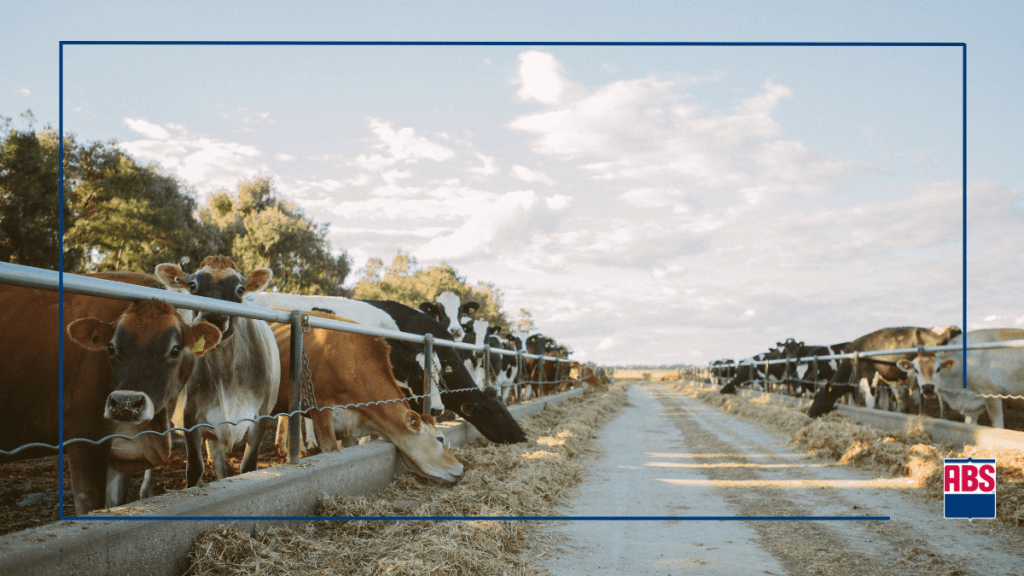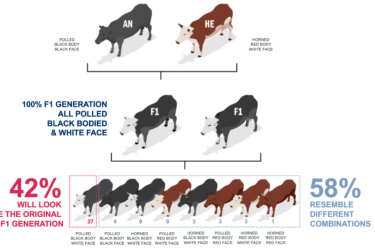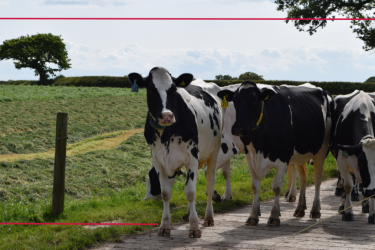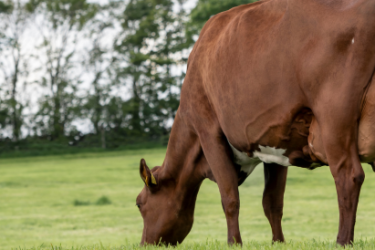Publish date: 7.7.25
More efficient, healthier, and better fertility—those are the words that would describe the kind of cows that can be created through a properly managed dairy crossbreeding program. Those cows can be produced in one generation which can positively impact your herd, but it does take a focused genetic plan and accurate management to reap the benefits, which can turn some away.
Expectations Versus Reality
In an attempt to make dairy crossbreeding easier, some are encouraging the breeding F1 sires to crossbred dams. We don’t recommend this approach because it typically doesn’t produce the desired outcomes you’d expect. The expectation is that if an F1 sire and an F1 dam are bred together, the offspring will resemble the original F1 generation. That isn’t always the case. The truth is that, in terms of the genome, purebred genes aren’t likely to be shared in a 50/50 split.
Statistically speaking, the reality is that mating an F1 sire to an F1 dam will only result in 42% of the progeny appearing like the original F1 generation in terms of phenotype and performance. 58% of the progeny will resemble different combinations of the original.
Recap of Why to Use F1 Sires for Dairy Crossbreeding
We’ve discussed these before in a previous article, but let’s review why we don’t recommend mating F1 sires to F1 dams now that we know more about crossbred animals.
- Inadequate Evaluation Method
Because we haven’t found the right method yet, there isn’t a great way to genomically evaluate crossbred animals today. Although crossbred cattle can be genotyped, they cannot be evaluated using the same methodology as purebreds.
Crossbred animals are currently compared to each breed that is represented in their DNA when they are given a genotype. Based on the percentage of each breed represented, the results are combined into a weighted average. Genes from all breeds are included in the analysis, which is not an accurate evaluation method since many genetic combinations are breed-specific and uncommon in other breeds.
- Lack of Selection Intensity
Only a few F1 sires are produced today with almost all entering stud. It is important to realize that most F1 sires are not created using purebred sires with the highest genetic merit part because a genetic companies’ mating strategy will likely have those sires generating the next generation of purebreds.
This foreshadows that many of the F1 sires are produced using the bottom portion of the top end of purebred sires, making the F1 population’s level of selection intensity is significantly decreased, even though many of those purebreds are good sires. The variation in genetic quality among F1 sires is exacerbated by this lack of selection intensity.
- Phenotypic Variation in Progeny
With precisely 50% of their genetic makeup coming from their sire and dam, F1 animals are incredibly uniform. Contrary to popular belief, mating an F1 sire to an F1 dam will not produce another uniform F1 animal. This phenotypic variation occurs because of how genes are passed from parents to offspring.
Given that 50% of their genes are Holstein and the other 50% are Jersey, an F1 parent can pass on genes that are all Holstein, all Jersey, or a combination of both for any gene pair. It is key to remember that genes are transmitted independently of each other.
Our Recommendation for Dairy Crossbreeding
Given the benefits dairy crossbreeding, we suggest utilizing an F1 female in system we call “Terminal F1 Crossing.” A subset of a herd is used as a purebred nucleus herd in this method. Using sexed semen and embryo technology, producers generate both F1 crosses and replacement purebreds from the “nucleus herd.”
The F1 females are then crossed to terminal beef genetics to produce a superior beef cross calf. By creating an offspring that is destined for the beef supply chain, mating the F1s to beef genetics eliminates the concerns of phenotypic variance, lack of selection intensity, and unreliability of crossbred evaluation. This technique creates a herd that is half purebred and half F1 crossbred, enabling farmers to take advantage of tools like genomics that are unavailable to fully crossbred herds, maximize heterosis, and remain agile according to market demands.
Learn more about dairy crossbreeding by reading our article originally published in Progressive Dairy.
Excellent production, superb health, unrivaled fertility, reduced workload, and increase profits are all things that you can expect from incorporating dairy crossbreeding in your operation. However, these benefits are only yields if the right dairy crossbreeding genetic plan for your herd is implemented and managed correctly.
Are you ready to reap the benefits? If so, contact your ABS Genetic Advisor or complete the for below.







